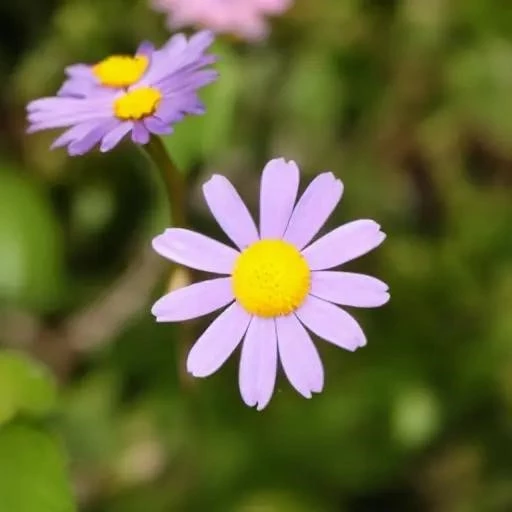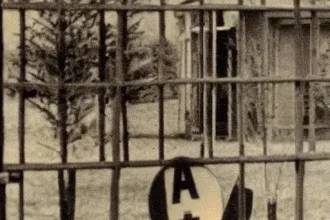Imagine a garden bathed in the soft glow of dawn, not merely adorned with conventional blooms, but speckled with vibrant, miniature constellations scattered across the verdant canvas. This enchanting vision is becoming an increasingly accessible reality, driven by the burgeoning popularity of the star-shaped garden flower. These botanical marvels, with their perfectly symmetrical five-pointed petals, are swiftly transforming ordinary landscapes into extraordinary celestial tapestries, captivating gardeners and environmentalists alike with their undeniable charm and ecological significance.
Beyond their striking aesthetic appeal, these floral gems offer a profound connection to nature’s intricate design. Their distinctive forms provide more than just visual delight; they serve as powerful beacons for biodiversity, irresistibly attracting vital pollinators like butterflies and hummingbirds. This dual functionality — combining unparalleled beauty with crucial ecological service — positions the star-shaped garden flower as a forward-thinking choice for any discerning horticulturist aiming for both visual splendor and environmental stewardship.
| Key Information: The Egyptian Starcluster (Pentas lanceolata) | |
|---|---|
| Common Name(s) | Egyptian Starcluster, Starflower |
| Botanical Name | Pentas lanceolata |
| Plant Family | Rubiaceae (Coffee family) |
| Native Region | East Africa (from Yemen to South Africa) |
| Flower Characteristics | Small, tubular, five-petaled flowers forming dense, star-shaped clusters. Available in vibrant shades of pink, red, lavender, purple, and white. |
| Growth Habit | Bushy, upright perennial shrub; frequently cultivated as an annual in cooler temperate zones. Typically reaches 1-3 feet in height. |
| Ecological Role | Incredibly attractive to butterflies, hummingbirds, and various other beneficial pollinators, making it an excellent choice for wildlife gardens. |
| Cultivation Needs | Thrives in full sun, requires well-drained soil, and benefits from consistent moisture. Regular deadheading effectively promotes continuous blooming throughout the growing season. |
| Reference Link | Missouri Botanical Garden ⎻ Pentas lanceolata |
The Undeniable Allure of Celestial Symmetry
The visual impact of these stellar blooms is truly captivating. Their geometric precision, a natural marvel fashioned by evolution, stands in stark contrast to the often-organic sprawl of surrounding foliage, creating irresistible focal points that draw the eye and spark appreciative conversation. Like tiny, living compasses, these star-shaped flowers orient the viewer towards beauty, providing a structured elegance that can elevate any garden design. From the delicate clusters of the Egyptian Starcluster to the more robust forms of other star-shaped varieties, their consistent form offers a sophisticated appeal, resonating with our innate appreciation for order and perfection found within nature’s wild artistry.
Beyond Aesthetics: An Ecological Powerhouse
Horticulturists and ecological advocates alike are increasingly championing these flowers for their undeniable contribution to garden ecosystems. In an era where pollinator populations face unprecedented threats, selecting plants that actively support these crucial creatures is not merely a choice but a responsibility. Dr. Evelyn Reed, a renowned botanist specializing in urban biodiversity, notes, “Planting star-shaped varieties like the Egyptian Starcluster is an incredibly effective strategy for bolstering local pollinator populations, essential for our food systems and the broader environmental health of our communities.” Their open, accessible flower structures make nectar and pollen readily available, making them a preferred pit stop for bees, butterflies, and even hummingbirds, thereby sustaining the very lifeblood of our ecosystems.
Cultivation and Innovation: Growing a Brighter Future
Cultivating these resilient beauties is remarkably straightforward, making them accessible to gardeners of all skill levels, from the novice enthusiast to the seasoned professional. Requiring ample sunlight and well-drained soil, these plants reward diligent care with an abundance of continuous blooms throughout the growing season. Moreover, the horticultural industry is constantly innovating. By integrating cutting-edge scientific insights and traditional breeding techniques, experts are continually unveiling robust new cultivars. These advancements offer gardeners enhanced disease resistance, improved drought tolerance, and an even broader palette of celestial hues, from fiery reds to serene purples, ensuring there’s a star-shaped flower to complement every conceivable garden aesthetic.
A Forward-Looking Vision: Twinkling Gardens for Tomorrow
As we collectively move towards creating more sustainable, vibrant, and aesthetically rich landscapes, the star-shaped garden flower is perfectly positioned to become a cornerstone of modern garden design. Their dual appeal of breathtaking beauty and vital ecological function makes them an ideal choice for urban green spaces, residential gardens, and large-scale public plantings. Imagining a future where every garden, urban balcony, and public park twinkles with these botanical stars is not merely a fanciful dream, but an achievable reality, promising to bring unparalleled joy and essential ecological balance in equal measure. Embracing these stellar blooms means investing in a future where nature’s wonders are celebrated and sustained, one dazzling, star-shaped flower at a time.






